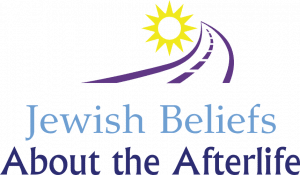The Torah (5 Books of Moses as well as the beginning of The Hebrew Scriptures – Tanakh or Old Testament) is strangely vague on the topic of the Afterlife. In my former post, http://rabbicosnowsky.com/afterlife/what-happens-after-death/ I mentioned that Abraham was said to have been “gathered to his kin.” (Genesis 25:8) I made the case that Abraham was spiritually gathered to his kin once he died. But the Torah does not specifically say that it was a spiritual gathering. The Torah also alludes to a physical gathering of his body. He was buried in the cave of Machpelah, his bones were to intermingle with the bones of his other family members. Although the Torah is not clear – (was it a physical gathering or a spiritual one?) we have to explore the earliest origins of what Torah has to say about life itself.
The Torah conception of Soul, flesh and physicality
In the second creation story, God breathed life or Ruach – wind or spirit – into Adam’s nostrils. (Genesis 2:7) Thus, Adam came alive when God gave him breath. However, in the Abraham story, when Abraham left Haran, it is said he took the people/slaves/souls with him (Genesis 12:5). “Souls”, as it was translated, were not considered ‘soul’ the way we think of soul. Soul in this biblical context could have meant “living people” – or physical forms of being. The idea of soul – as we understand a soul today – something differentiated from the body – was not explained nor expounded upon.
The soul itself, in Torah, had no independent status. The idea of soul leaving the body was a later development in Ecclesiastes 12:7 that “The Spirit shall return to God who gave it.” (I cannot wait to write subsequent blogs about this! Sit tight – I’ll get to this soon!)
Hence, the Torah stays very vague on the idea of soul and body. Abraham (and others who have similar citations such as Isaac (Genesis 35:29), Jacob (Genesis 45:29) Aaron (Numbers 20:24) and Joshua (Judges 2:10)) were also ‘gathered to their kin’, according to Torah.
Two Characters in Torah Who Never “Died”
I have a friend named Jay who was obsessed with a character in the Torah whom I had never really heard of. His name is Enoch and Jay introduced me to Enoch one morning during Torah study. If you blink, you miss Enoch in Torah because he only appears in Genesis for a blink of an eye. Truly a minor character, I thought maybe Jay was making stuff up and trying to trick me. After all, I was a newly minted Rabbi and didn’t have much experience with scholarly types such as he. But alas, Jay showed me, “Enoch walked with God; then he was no more, for God took him.” (Genesis 5:24)
God took him where? Well, Jay and the Torah were vague about that. Jay was so crazy about it was how only Enoch and later Elijah – are the only 2 characters in Torah who don’t explicitly die. Elijah is carried off to heaven in a fiery chariot. “…a fiery chariot with fiery horses suddenly appeared and separated one from the other; and Elijah went up to heaven in a whirlwind.” (2 Kings 2:11) Elijah earns the place in Jewish folklore of being the one who will herald in the Messianic era. It is he who is called upon to perform miracles on behalf of righteous Jews during the Middle Ages. But what about Enoch?
The Book of Enoch is in the Apocrypha. The Apocrypha is the later scriptural additions which were preserved by the Catholic scriptural canon, but doesn’t appear in Jewish literature. The Book of Enoch concerns itself with individual fate and not national destiny.
I will be writing more about Enoch in my subsequent blogs. Enoch is fascinating and his book discusses such subjects as:
- Why the wicked prosper on earth (but not in death,)
- Why man suffers (hint – it’s not because of the sin of Adam!)
- The Jewish concept of Sheol, which is later developed into the concept of Hell.
Well, no, and yes, sort of. There’s a concept called Sheol which I will also explore in later blogs as well. Sheol was a neutral place for souls/people to go to wait for their loved ones to also die. Together, they’d all go to the next realm. This idea is very general and again vague in Torah. Sheol gets more in depth in later literature. It is developed and divided into the concepts of Purgatory for Catholics and Hell for Christians.


